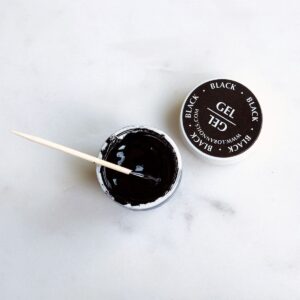Dyeing is an art.


When the waves of aesthetic food pictures hit the social media, we often amazed by the breath-taking masterpieces made by fellow netizens, you’ll be thinking, how they did that? From the awfully adorable cake pops to the picture perfect Ombre cake, these exquisite pastries are grace with the use food colourings or food dyes for the feast for the eye.
There are plenty of food colourings available in the market but often we confused about the applications on frostings and dough where sometimes we have to toss them out.
Before we run through the list of food colourings available in the market, what you need to know is that food colourings categorized into Natural or Synthetic.
Let’s dive in into food colourings, and break it down to understand which type food dyes you should use them, and this will ignite your imagination of your next try out!
Natural Food Colourings
WHAT IS IT: Natural Colours can be extracted from natural and plants sources in which they consist natural colour pigments such as saffron or turmeric are used to make yellow, carrot juice makes orange, and beets make red tones, spinach or spirulina to make shades of greens.
APPLICATION/HOW TO USE: Can be applied as Water-based Food Colourings.
Synthetic Food Colourings
Synthetic Food Colourings are further being categorized into two main streams: DYE and LAKE Colours. These colour pigments appeared to be in powder form and usually will be added into solvents or carriers such as propylene glycol (PG), Glycerine, Syrups.
DYE Colours: Dye colours give its colouring power when it solubilized in water, but this dye will not be solubilized in oil.
LAKE Colours: These are pigments are insoluble materials that tint oil and fats by DISPERSION (Not solubilize!). Thus, it shows colours when being mixed with oils and fats.
Well, after knowing about the categories of food colourings, we can now run through the list with better understandings.
Here’s what we can find for synthetic food colourings.
1. Liquid Colouring

WHAT IS IT: Synthetic Food Colourings, Made by dissolving Artificial Colour Powder in solvents such as water, glycerine or/and corn syrup.
APPLICATION/HOW TO USE: Any food (Pastries, frostings, beverages) but NOT FOR CHOCOLATES.
2. Liquid- Gel Food Colouring

WHAT IS IT: High in viscosity, gel-like liquid. Liquid Gel colouring imparts more intense colour as compared to liquid food colourings.
APPLICATION/HOW TO USE: Any food, especially recipes which are sensitive about its water content such as fondant. NOT FOR CHOCOLATES.
3. Gel Paste

WHAT IS IT: Super concentrated version of Liquid-Gel Colouring.
APPLICATION/HOW TO USE: Any food, especially recipes which are sensitive about its water content. Usually used larger scaled baking and confection making. NOT FOR CHOCOLATES.
4. Oil-Based Food Colourings

WHAT IS IT: The Ingredients doesn’t necessarily contains fats or oil, but contains ingredients such and emulsifiers and certain solvents formulated to be fit the oily food system.
APPLICATION/HOW TO USE: Food with high fat or oil content such as Chocolates and high ratio buttercream frosting.
5. Powder Food Colouring (Colour Dust)

WHAT IS IT: Dyes in powder form. No solvent or liquid is added.
APPLICATION/HOW TO USE: Can be added directly into a dry mixture or batter, mix with a few drops of clear alcohol, or brush the powder directly onto foods as a finish.
Green House Ingredient’s Food Colourings have been tested on different recipes which have shown its versatility in applications, it’s almost like an All-In-One Food Colouring. From Chocolate to Whipped Cream, Biscuits to Cakes, Green House’s Ingredient’s colour imparts great quality colours. Although we don’t sell any consumer pack at the moment, but we have started to distribute our food colourings through private labels.


Share this:


